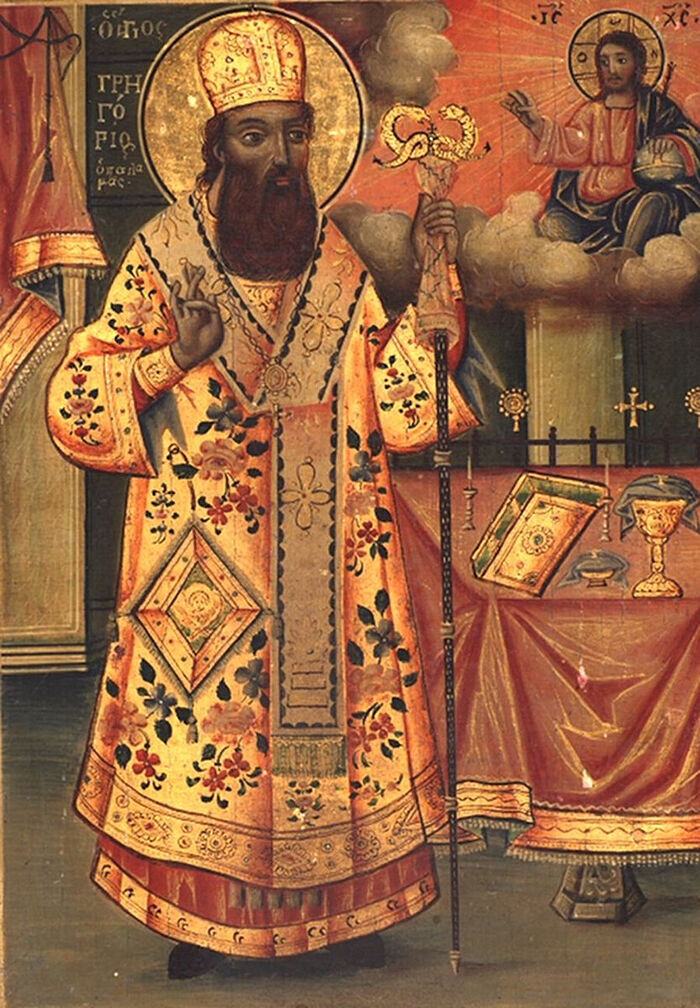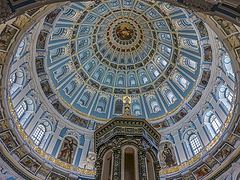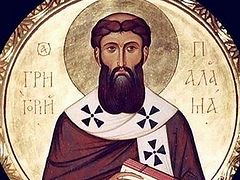In the name of the Father and the Son and the Holy Spirit!
Today can rightly be called the little Lenten Transfiguration. Liturgical scholars tell us that the feast of the Transfiguration once fell in Lent. This is evidenced by the words of the liturgical texts of the feast that talk about the glory of the Cross.
The sequence of the Lenten Sundays is opened up before us. The first Sunday of Great Lent tells us about the image: about Christ, incarnate and bringing salvation into history. The second Sunday of Great Lent testifies to the glory—the glory of Christ, which is inseparable from the Cross, because its price is the Cross. On the Cross of Christ, the salvation brought to men and in men is revealed. That’s why after this we celebrate the Glory of God revealed in the saints: in St. John Climacus, who completed the path of the virtues, and St. Mary of Egypt, who traversed this path in an even more difficult way—rising from sin by the power of the Cross.
The last, the sixth Lenten Sunday is the day of the earthly glory of the Savior, the glory of His Entrance into Jerusalem; His glory and joy, which even His enemies couldn’t deprive Him of. The significance of today as the Great Lenten Transfiguration is not at all diminished by the fact that the Church transferred the celebration of the Transfiguration and replaced it with the celebration in honor of the great Holy Hierarch Gregory Palamas.
St. Gregory was a man whose life centered on theological reflection, whose path was the Transfiguration. Reading the texts of the liturgical sequences dedicated to St. Gregory, we hear praises and glorification of this great figure of Church history. However, these texts tell us little about that path, the path of sorrows and difficulties, troubles and defeats that he passed through.
The Holy Hierarch began his life in Christ on Mt. Athos, but he was called to the episcopal ministry. His congregation didn’t allow him to take up his cathedra, and sorrows began to enter his life. The Holy Hierarch was taken captive by the Turks and was ransomed only much later. He endured attacks by his theological opponents who claimed that the doctrine of the Transfiguration and the Divine light that he defended was false. He was formally condemned, and only at the end of his life did his teaching triumph, becoming the teaching of the Orthodox Church.[1]
What did St. Gregory teach us about? St. Gregory taught us of the truth that the light seen by ascetics, the light of Christ, which comes into the life of the saints, which comes into every Christian life, isn’t the fruit of human fantasy, of subjective reflection, but a gift of God, giving Himself to mankind. The light of Christ is the light of the Transfiguration. Therefore, reflection upon the Transfiguration became the symbol of St. Gregory’s entire life.
For every one of us, the teaching of St. Gregory is revealed in the necessity of preserving authenticity. Our civilization is a civilization of noise and inauthenticity. The word of the Church is a word about silence and about the true light. Reflecting upon it, we’re called to follow the words of the saints, the words of the Church’s teaching about authenticity in our daily lives. Because the word of the saints, the word about the Divine light of the Transfiguration is a word about the possibility of the Transfiguration entering into the life of every one of us.
The teaching of St. Gregory is the teaching about sin and liberation from it. What is sin in the definition of St. Gregory? Sin is lost glory. Sin is the loss of the glory of the Divine gift. By sinning, we violate the commandment, we offend God. But that’s not the main thing. The most important thing is that we lose the glory given us in our creation and recreated for us in Baptism.
This glory was manifest in the life of St. Gregory, it was manifest in the lives of the saints, whose memory is so dear to us, whose memory we celebrate today—the great ascetics of the Kiev Caves Lavra.[2] It’s a quiet glory. This glory is like the glory that lives in the heart of every one of us, the glory given us in Baptism. The saints of the Kiev Caves Lavra, the saints who repose in the caves, are fixed in anticipation of the Resurrection, and quiet glory permeates their rest.
Reflecting upon the days of Great Lent, upon the meaning of every step on the path of ascent to the day of the great Resurrection of Christ, we’re called to ensure that this reflection bears fruit. The life of St. Gregory Palamas contains no indications of miracles or supernatural gifts. But the last words he pronounced upon his departure to the Lord explain everything. They indicate that the glory that about which he preached, the glory of the Taboric light of the Transfiguration by which he lived, entered into his heart, penetrated his being, and called him to itself. His last words were: “To the Heavenly heights, to the light!”
Let us also strive for this light. Let us try to remember the light already given to us—the quiet light of the holy glory of the great and glorious Transfiguration of Christ, which leads to the Cross, but ends with the glorious Resurrection.
Amen.




